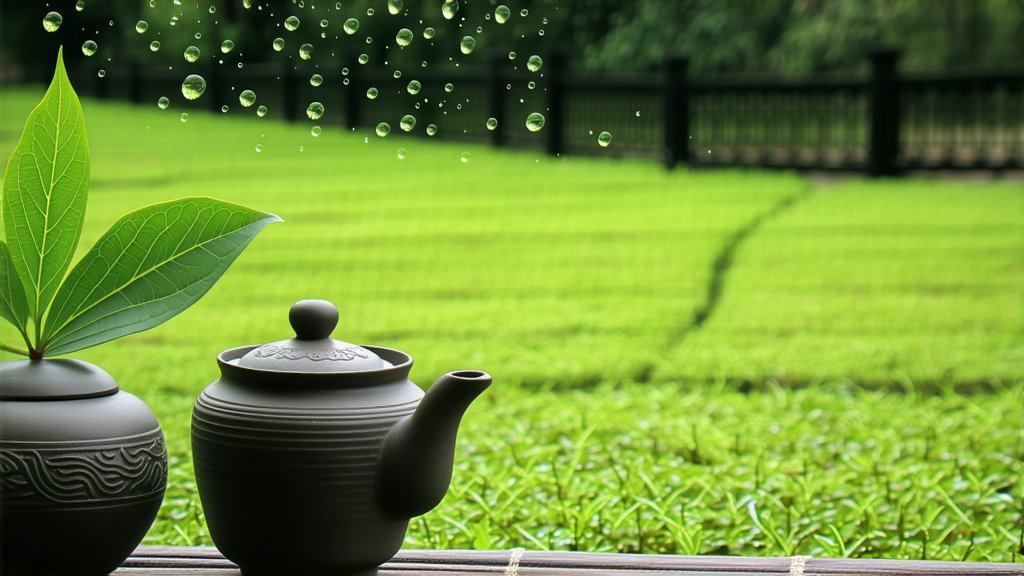
Dragon Well Tea, also known as Longjing (龙井) in Mandarin, stands as one of the most revered and iconic representatives of Chinese green tea. Originating from the picturesque landscapes surrounding West Lake in Hangzhou, Zhejiang Province, this tea has captivated tea enthusiasts for centuries with its unique flavor profile, exquisite appearance, and rich cultural heritage. In this article, we embark on a journey to explore the history, varieties, meticulous crafting process, and art of appreciating Dragon Well Tea.
A Glimpse into History
The tale of Dragon Well Tea traces back over a thousand years to the Tang Dynasty (618-907 AD), though it was during the Qing Dynasty (1644-1912) that its reputation soared. Legend has it that the tea was named after a well located near the village of Longjing, which was believed to be blessed by a dragon, symbolizing prosperity and good fortune. This mystical connection, coupled with the tea's exceptional quality, contributed to its rise in popularity among imperial courts and common folk alike.
Varieties within the Dragon Well Family
While Dragon Well is often referred to as a singular type of tea, there exist subtle variations depending on the region of cultivation and the specific processing techniques employed. The most renowned subtypes include:
-
Xi Hu Longjing: Grown in the immediate vicinity of West Lake, this is considered the epitome of Dragon Well Tea. Its leaves are characterized by their flat shape, resembling the blades of a spear, and a vibrant emerald hue.
-
Meijiawu Longjing: Hailing from the Meijiawu Village, these teas are prized for their slightly fuller body and a hint of chestnut aroma, attributed to the unique microclimate of the area.
-
Yeleping Longjing: Produced in the Yeleping region, this variety offers a more robust flavor profile with a distinctive roasted note, appealing to those who prefer a stronger cup of green tea.
Each subtype carries with it a distinct terroir, reflecting the nuances of their respective growing environments and contributing to the diverse tapestry of Dragon Well Tea.
The Art of Crafting Dragon Well Tea
The production of Dragon Well Tea is an intricate dance between nature and human skill, encompassing several meticulous steps:
-
Hand-Picking: Only the youngest, tenderest leaves and buds are harvested, typically in early spring when they are at their nutritional peak. This selective picking ensures the highest quality and purity of flavor.
-
Withering: Freshly picked leaves are spread out thinly to allow for gradual moisture loss, which softens the leaves and prepares them for shaping.
-
Fixation: The leaves undergo a quick high-heat treatment in large woks or pans to halt oxidation, preserving their green color and fresh aroma. This step also helps to develop the characteristic flat shape of Dragon Well leaves.
-
Shaping: Master tea artisans skillfully roll and flatten the leaves using their hands or specialized tools, creating the signature spearhead shape that is emblematic of Dragon Well Tea.
-
Drying: Finally, the shaped leaves are carefully dried to remove any remaining moisture while retaining their vibrant color and delicate flavors.
Throughout this process, great care is taken to maintain the integrity of the tea leaves, ensuring that each batch of Dragon Well Tea embodies the essence of its origin.
The Ritual of Tasting Dragon Well Tea
To truly appreciate Dragon Well Tea, one must engage in the traditional Chinese tea ceremony, a practice steeped in mindfulness and respect for the beverage. Here’s a guide to savoring this exquisite tea:
-
Preparation: Begin by selecting a clean, transparent glass or a traditional Yixing clay teapot. Warm the vessel with hot water before discarding it.
-
Measurement: Use approximately 3-5 grams of Dragon Well Tea per 200ml of water. The ratio can be adjusted based on personal preference for strength.
-
Water Quality: Employ freshly drawn spring water or filtered water heated to around 80°C (176°F). Overheating can scorch the delicate leaves and result in a bitter taste.
-
Infusion: Gently pour the hot water over the tea leaves, allowing them to unfurl gracefully. For the first infusion, let the tea steep for about 1-2 minutes, gradually increasing the time for subsequent infusions as the leaves open up more fully.
-
Observation: Admire the transformation of the dry leaves into a lively dance within the water, noting the color change from pale yellow-green to a deeper hue with each brew.
-
Aroma: Inhale deeply to capture the subtle fragrance of fresh grass, chestnuts, or orchids, depending on the specific Dragon Well variant.
-
Tasting: Sip slowly, allowing the tea to coat your palate. Notice the initial sweetness followed by a slight vegetal bitterness that melds into a long-lasting, refreshing finish. Pay attention to the texture, which should be smooth and silky.
-
Reflection: Take a moment to appreciate the harmony between the tea's flavor, aroma, and visual beauty, reflecting on the centuries-old tradition that brought this cup to life.
Dragon Well Tea is not merely a drink; it is an experience that connects the drinker to Chinese culture and the natural world. Its legacy continues to thrive, inviting new generations of tea lovers worldwide to discover its charm and depth.